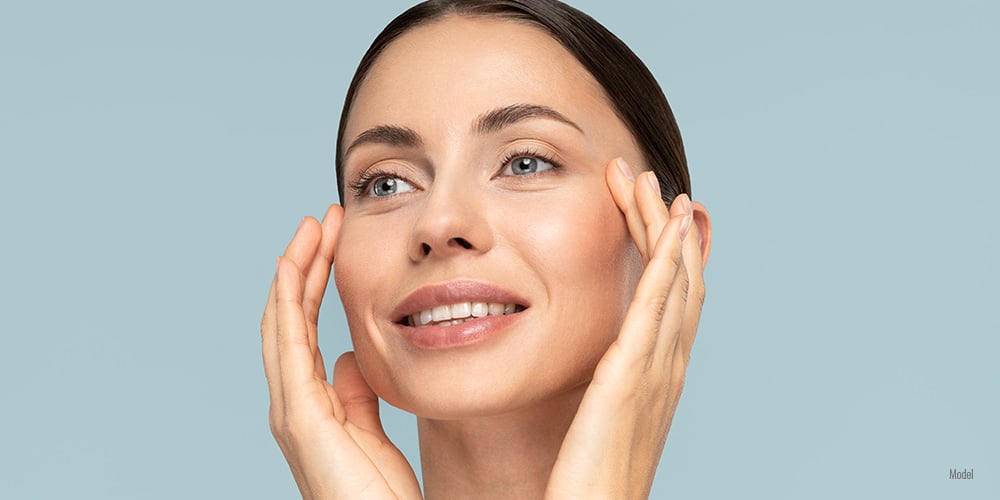January 06, 2025 | 5 minute read

Minimal Access Cranial Suspension facelift surgery, also known as a MACS facelift, is a modern surgical technique designed to address moderate signs of aging in the face and neck. Unlike traditional facelifts, this method focuses on a less invasive approach, providing natural-looking results with shorter recovery times. It targets sagging cheeks, jawlines, and neck areas so patients can achieve a rejuvenated and refreshed appearance. This blog will explore everything you need to know about the MACS facelift, including its procedure, comparisons to other techniques, benefits, and what you can expect before and after the surgery.
How Is a MACS Facelift Performed?
The MACS facelift is a minimally invasive procedure that is typically performed under general anesthesia, though it can also be performed under local anesthesia with sedation. Here’s how it works:
- Small Incisions: The surgeon makes small, strategic incisions along the hairline and in front of the ears. These incisions are discreet, making scars nearly invisible once healed.
- Tissue Suspension: Using specialized sutures, the underlying facial tissues are lifted vertically. This lifting approach corrects sagging cheeks and improves jawline definition.
- Skin Redraping: Excess skin is gently trimmed and redraped for a smooth, natural finish.
- Closure: The incisions are closed with delicate sutures, ensuring minimal scarring.
This procedure usually takes two to four hours and is generally performed on an outpatient basis, so you can go home the same day.
MACS Facelift vs. Standard Facelift
The primary differences between a MACS facelift and a standard facelift lie in the invasiveness and recovery time.
- Incisions: A standard facelift involves longer incisions that extend behind the ears and sometimes into the scalp, while a MACS facelift uses smaller, less invasive incisions.
- Tissue Handling: Traditional facelifts typically involve extensive dissection and repositioning of facial tissues, which can result in a longer recovery period. In contrast, the MACS facelift focuses on vertical lifting, reducing trauma.
- Recovery: A standard facelift may require several weeks for full recovery, while a MACS facelift usually involves a quicker return to normal activities.
If you’re looking for a natural, refreshed look without extensive downtime, the MACS facelift might be the ideal option for you.
MACS Facelift vs. SMAS Facelift
The SMAS (Superficial Muscular Aponeurotic System) facelift is another popular procedure for facial rejuvenation. Here’s how it compares to the MACS facelift:
- Approach: The SMAS facelift involves repositioning the deeper facial muscles and tissues, whereas the MACS facelift focuses on a vertical lift using suspension sutures.
- Complexity: SMAS facelifts are more complex and invasive, making them suitable for more severe cases of facial aging. The MACS facelift is ideal for those with mild to moderate sagging.
- Results: Both techniques deliver excellent results, but the MACS facelift prioritizes subtle, natural enhancements with less recovery time.
Your choice between the two depends on your aesthetic goals and the severity of facial aging.
Benefits of a MACS Facelift
The MACS facelift offers several advantages, making it a popular choice for facial rejuvenation:
- Minimally Invasive: With smaller incisions, this procedure minimizes scarring and reduces recovery time.
- Natural-Looking Results: The vertical lifting approach avoids an over-pulled appearance, ensuring subtle, youthful changes.
- Quicker Recovery: Many patients return to regular activities within two weeks, compared to a month or more with traditional facelifts.
- Longevity: While results vary, a MACS facelift can provide long-lasting improvements for 7–10 years.
MACS Facelift Before and After
The transformation after a MACS facelift is often remarkable. Before the procedure, patients typically notice sagging cheeks, jowls, and loose skin around the neck. Afterward, the face appears lifted, with improved contours and a more youthful look.
Your surgeon will provide personalized advice on preparing for the surgery and post-operative care to optimize your results. Expect some swelling and bruising initially, although these effects typically subside within a few weeks.
How Much Does a MACS Facelift Cost?
The cost of a MACS facelift varies depending on surgeon fees, facility fees, and the complexity of the procedure. While cost is an important consideration, choosing an experienced and trustworthy plastic surgeon ensures your safety and the quality of your results. Schedule a consultation and receive your personalized quote from Dr. Nouri.
Why Choose Dr. Nouri for a MACS Facelift?
Dr. Andrew Nouri is a highly qualified plastic surgeon with extensive experience in facial rejuvenation procedures. His expertise ensures that every MACS facelift is tailored to your aesthetic goals and unique facial anatomy. Patients trust Dr. Nouri for his precision, artistry, and commitment to delivering natural-looking results. At Nouri Plastic Surgery, you’ll benefit from state-of-the-art facilities and a compassionate, professional team dedicated to your care.
Interested in a MACS Facelift in Paramus, NJ?
If you’re ready to explore the benefits of a MACS facelift and see if this procedure is right for you, Dr. Nouri and his team are here to help. Call us at 973-200-2050 or fill out our online contact form to schedule your consultation today.
